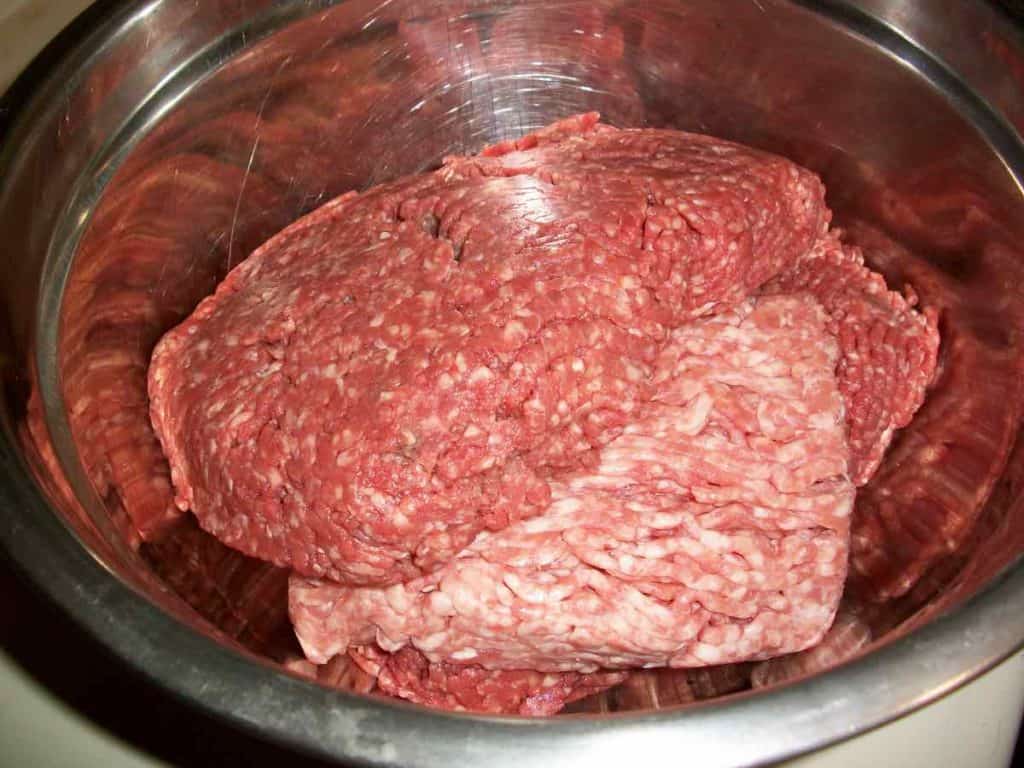Rules for Cooking Ground Pork: Temperature, Time, etc.
Ground pork can make a useful substitute for ground beef or chicken in many different recipes. However, you must know how long to cook it to make sure it’s cooked through. This is especially important in recipes like meatballs or meatloaf, where the inside of the dish might not be as done as the outside.
In general, loose ground pork only takes three to four minutes to cook, but all ground pork should be cooked to 145 degrees for food safety. Whole ground pork dishes like meatloaf or meatballs may take longer to cook through than ground pork used in stir-fries or soups.
Ground pork can be showcased in a wide variety of dishes as long as you cook it right. Read on to learn more useful tips about ground pork and how to incorporate it into your cooking.

How Long Does Ground Pork Take to Cook?
If you’re just trying to brown some ground pork in a skillet to be used in a recipe like a stir fry or casserole, it shouldn’t take you longer than three to four minutes to cook it thoroughly.
Pork doesn’t take as long as ground beef to fry, making it a useful ingredient to have on hand for quick weeknight suppers.
How Do You Know When Ground Pork Is Cooked?
Ground pork is generally cooked when it turns white and begins to brown slightly. It will also give off a cooked smell that is distinctly different than the smell of raw pork. However, you shouldn’t rely on sight and smell alone.
A digital thermometer is a much better option for food safety. Using a thermometer, you can measure exactly what temperature your ground pork has been cooked to.
Follow the U.S. Department of Agriculture’s (USDA’s) safety recommendations for a guideline on temperatures related to food safety.
What Temperature Should Ground Pork Be Cooked To?
According to the USDA’s standards, ground pork should be cooked to 160 degrees Fahrenheit to be considered safe for consumption. (Source: USDA) This is the lowest temperature possible that is still capable of destroying any harmful bacteria or parasites present in the meat.
Can You Overcook Ground Pork?
It is easy to accidentally overcook ground pork since it is usually leaner meat than ground beef. With less fat to keep the meat moist, there is a risk of drying it out during the cooking process, making it crumbly. (Source: Michigan State University)
In some dishes such as casseroles, this might not be as noticeable, but in dishes where the ground pork is prominent such as pork burgers, overcooked pork will ruin the dish.
Here are a few tips you can follow to avoid overcooking your ground pork:
- Include a wet binder. If you’re making burgers or meatloaf, include a binding element that adds moisture to the ground pork mixture such as eggs or sour cream. This will give the meat a little extra fat and help it stay moist during the cooking process.
- Add some chopped bacon or guanciale. Mincing up a fattier cut of pork and incorporating it into your ground beef can jump up the fat content of the meat and keep it from drying out. This is an especially useful method for mixing up burgers, meatballs, or meatloaf. Caul fat is also a good option if you can find it.
- Add baking soda. Baking soda will help your ground pork brown faster while also keeping it more moist during the process.
It’s smart to make sure your ground pork is cooked thoroughly, but you don’t want it overcooked to the point the texture of the dish is ruined. Taking steps to protect the meat from drying out can allow you time to cook the ground pork completely without overcooking it.
Risks of Undercooked Ground Pork
The reason that cooking pork thoroughly is such a serious topic is that there are several risks associated with undercooking this type of meat. Here are just a few of the problems you might run into if you don’t cook your ground pork long enough:
- Foodborne illness: Ground pork can make people violently sick with food poisoning from bacteria like salmonella and e.coli.
- Parasites: Undercooking ground pork can lead to parasitic infection from roundworks such as trichinosis. (Source: Mayo Clinic)
- Bad taste/texture: Even if you manage to avoid food poisoning or parasites with your undercooked ground pork, the taste and texture of raw ground pork in a dish is off-putting. The best scenario you can look forward to is a ruined dinner.
Since food thermometers are easy to find and use, there’s no point in risking the above complications during your next ground pork dinner. Making sure you get your ground pork to 160F will ensure that nobody walks away sick from your meal.
Recipes for Cooked Ground Pork
If cooked properly, ground pork can form the basis for many different dishes. Heavier than chicken but lighter than beef, pork is especially popular in Italian and Asian cuisines. Pork is a relatively bland meat, which means that it’s great for soaking up the flavors of different sauces, herbs, and spices.
These are just a few of the different types of ground pork recipes you can try:
- Meatballs: Ground pork meatballs are popular appetizers in Southasian cuisines such as Thai and Malaysian dishes. Pork meatballs are also great paired with Italian tomato-based sauces and pasta. Try chopping up fresh aromatic herbs such as basil, lemongrass, and oregano to give your pork meatballs an extra boost of flavor and color.
- Meatloaf: Ground pork can make a lighter substitute for beef for making meatloaf, and it can pair with a wider variety of flavors. Try incorporating salsa and cilantro for a Mexican-inspired meatloaf or bacon, BBQ sauce, and cheddar for a Western take.
- Pork burgers: Pork burgers can impart many of the same flavor combinations as ground pork meatballs, but in a sandwich form instead. Try going with different sauce combinations such as aoili, sriracha, or sesame-ginger to give your burgers different flavor profiles. Mixing spices directly into the meat helps too.
These are just a few of the dishes you can make using ground pork as the basis of your recipe. Any casserole using ground beef or ground chicken can usually be made with ground pork as a substitute ingredient.
Ground Pork Is a Versatile Protein
Even though it might not be as popular as ground beef when it comes to making recipes, ground pork is a healthy option that can be added successfully to many different meals. Try making a ground pork recipe for your next weeknight supper for a meal that is both delicious and quick to get on the table.





